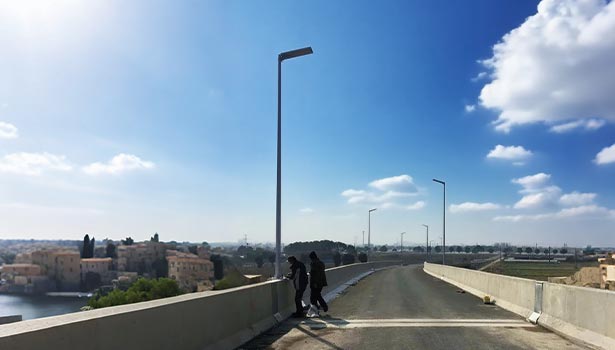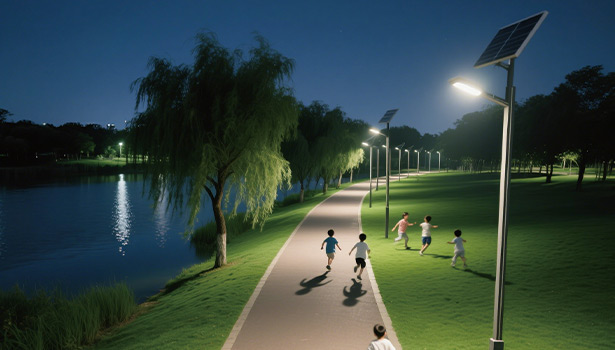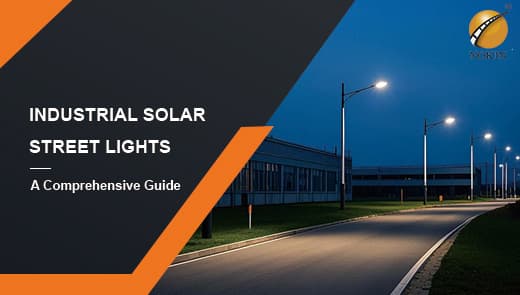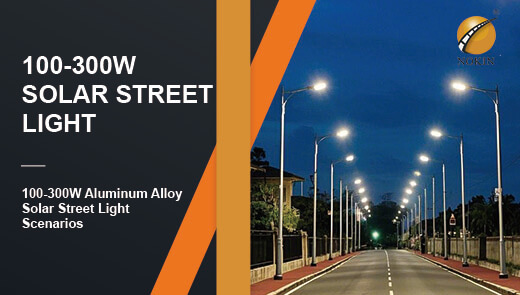What is the Life Expectancy of a Street Light Pole?
Street light poles are a common sight in the streets and alleys of cities. They not only bring light to the city at night and protect people's traveling safety, but also are an indispensable part of the city's infrastructure. So, these street light poles stand silently, how long is their life? This paper will focus on this core issue to explore in detail.
The Role of Light Poles in Urban Infrastructure
Street light poles are not only the bearers of lamps, but also the key facilities for the normal operation of the city. The light they emit not only illuminates every corner of streets, parks and other public areas, but also invisibly builds a line of security - sufficient light can significantly reduce the rate of crime at night, reduce all kinds of traffic accidents, and add peace of mind to the lives of community residents.

At the same time, street light poles are also an important expression of urban aesthetics. Whether it's a modern style with smooth lines or a vintage look with a touch of age, they blend into the environment of the area they're in and become a vehicle for conveying the cultural qualities of the community, making the cityscape more recognizable and unique.
Design Considerations
The design of light poles should take into account the practical value and durability. Parameters such as height, base size and adaptability of lamps directly affect the lighting effect and the difficulty of maintenance. For example, although high-pole lights can cover a wider area, the frequency and cost of maintenance will increase accordingly.
The structural design of the base is the core of the stability of the pole, and its wind load resistance directly determines the service life of the pole. Scientific base structure can make the pole still stand in extreme weather such as storms and rain.
The planning of the spacing of the light poles is also a test of wisdom: too sparse will form a blind spot, too dense will cause energy waste and light pollution. Nowadays, LED technology, with its high energy efficiency and long lifespan, has become the ideal choice for balancing lighting effect and energy consumption, and is widely used in urban lighting planning.
Street Light Pole Average Lifespan Estimates
There is a general standard range for the average lifespan of street light poles in the industry, usually between 20 and 50 years. However, the average life span of street light poles varies significantly depending on the material used, as shown in the table below:
|
Material |
Approximate Lifespan |
Features |
|
Steel Pole |
20–30 years |
Strong and durable, but prone to corrosion; performs poorly in humid or coastal environments |
|
Aluminum Pole |
30–50 years |
Lightweight with excellent corrosion resistance; ideal for harsh weather; low maintenance |
|
Concrete Pole |
Over 50 years |
Extremely sturdy, resists most environmental stress; requires regular structural inspection |
|
Fiberglass Pole |
15–25 years |
Lightweight and weather-resistant, but not as strong as steel or concrete |
It should be noted that these life expectancy figures are not absolute. In practice, local environmental conditions, maintenance practices and other factors will have an impact on the life span of a streetlight pole. In some cities, the lifespan of a streetlight pole can exceed 50 years with proper maintenance and regular renovation. In addition, the structural life and functional life of a street light pole may not be consistent. As lighting technology continues to advance, lighting fixtures may need to be replaced due to technological upgrades before the pole has reached the end of its structural life.
Factors Influencing the Life Expectancy of a Street Light Pole
Material Matters
As shown in the previous table, the physical and chemical properties of different materials determine their own durability. Steel poles are a common choice due to their high strength, but iron reacts with oxygen and moisture in the air, and in humid or coastal environments, rust gradually eats away at the internal structure from the surface, shortening the life of the pole.
Aluminum poles are self-protected through the formation of an oxide film, and their corrosion resistance far exceeds that of steel poles, giving them an obvious advantage in rainy, high humidity areas. Concrete poles are made of gravel, cement and other mixed, dense structure, can resist most of the chemical erosion and physical impact, just need to pay attention to the long-term use of internal steel corrosion. Fiberglass poles are lightweight and weather-resistant, but the toughness of the material is limited, and long-term exposure to strong winds and other external forces are prone to fiber breakage, resulting in a decline in strength.

Environmental Conditions
Extreme weather has a significant impact on street light poles. Prolonged heavy rainfall will penetrate into the pole body gaps and connections, accelerating the material oxidation corrosion; snow accumulation will increase the burden on the pole body, which may lead to structural deformation; strong sunlight in the ultraviolet rays will destroy part of the molecular structure of the material, leading to the aging of the plastic parts, metal becomes brittle, especially on the fiberglass and the coating of the damage is obvious, so that the street light poles gradually lose the original strength and stability.
Pollution and salt spray also threaten the life of street light poles. Highly polluted cities, sulfur dioxide, nitrogen oxides and other acidic gases and water vapor combined to form acid rain, continued erosion of the surface of the pole, destroying the protective coating, so that the internal material is directly exposed to corrosive environments. Salt spray in coastal areas contains a large number of chloride ions, which can penetrate the metal oxide layer, accelerating the electrochemical corrosion of steel poles, etc., at a rate far exceeding that of ordinary environments, seriously affecting the structural integrity.
Large temperature fluctuations can also damage street light poles. Large temperature difference between day and night or seasonal alternation of the region, the pole material will be repeatedly with the temperature expansion and contraction. The thermal expansion and contraction coefficient of metal is large, long-term expansion and contraction will make the weld, the joints produce stress, and gradually appear loose or cracks; concrete may be uneven due to internal stress cracking, these small damages will become the channel for moisture, pollutants invasion, further aggravate aging, shorten the service life.
Maintenance Measures to Extend the Life of Street light Poles
Proper and regular maintenance is a key factor in maximizing the life of streetlight poles. Scientific maintenance can effectively slow down the aging rate, prevent potential risks, and even allow the actual service life to exceed the theoretical range. Specific maintenance measures include the following:
Regular Inspection and Testing
Regular inspection and testing is the foundation of maintenance work. At least once a year, an appearance inspection should be carried out to scrutinize the pole body, base and joints for signs of damage such as cracks, deformation and looseness. For concrete poles, focus on whether there is any spalling on the surface and whether the internal reinforcement is exposed; for metal poles, pay attention to whether the welds are solid and whether there are signs of corrosion penetration. For steel poles, the thickness of the anti-corrosion coating needs to be tested regularly with professional tools, and once the coating is found to be worn or flaking, it should be repaired in time to prevent further corrosion of the metal, and the frequency of corrosion inspections needs to be increased in coastal or high humidity areas.
In addition, for areas prone to strong winds and heavy snow, it is necessary to regularly test the wind resistance and load-bearing performance of street light poles, such as checking whether the base is loose due to soil erosion, and whether the pole is bent under long-term stress.

Anti-Corrosion And Reinforcement Treatment
Different materials of street light poles, anti-corrosion and reinforcement treatment methods have their own focus. Metal poles, steel poles need to be painted regularly with antirust paint or galvanized to form a protective layer on the surface to isolate the metal from air and moisture; aluminum poles have a natural anticorrosion, but if the surface oxide film is damaged, such as scratches, you need to repair in time with a special aluminum anticorrosive agent.
Concrete poles should regularly clean the surface to remove moss and stains that may retain moisture and accelerate aging, etc. If cracks are found, they need to be filled with high-strength concrete repair materials and reinforced with fiber-reinforced materials if necessary to prevent cracks from expanding. Fiberglass rods should avoid direct impact during use, and if slight damage is found, it needs to be bonded and reinforced with special fiberglass repair kits to prevent fiber breakage from spreading.
Daily Cleaning and Functional Maintenance
Daily cleaning should not be ignored, to regularly wipe the surface of the street light pole, remove dust, bird droppings and other adherents, because these substances may contain corrosive components, long-term adherence will gradually erode the surface material, especially for poles with protective coatings have a greater impact. At the same time, although the street light pole is a structural component, but its connection with the lighting fixtures, such as bolts, lines, etc. also need regular maintenance, to check whether the connection parts are tight, whether the line is aging and leakage, etc., these problems if not dealt with in a timely manner, may indirectly affect the stability of the pole, for example, rainwater may penetrate through the line holes.
Timely Replacement Of Aging Parts
Even if the main structure of the street light pole is intact, some of the vulnerable parts, such as base bolts, decorative parts, etc., may be prematurely aged or worn. Timely replacement of these parts can avoid chain reactions affecting the overall structure. For example, loose base bolts may cause the pole to become unstable, increasing the risk of tipping over in strong winds.
The service life of a streetlight pole is affected by factors such as material, environment and maintenance, and usually ranges from 20 to 50 years, with significant variations in different materials. Regular inspection, anticorrosion reinforcement, daily cleaning and replacement of parts and other maintenance work can effectively extend its service life. Paying attention to the service life of street light poles and rationally planning for replacement and maintenance is of great significance to guarantee the safety of urban lighting and maintain the stable operation of infrastructure.




